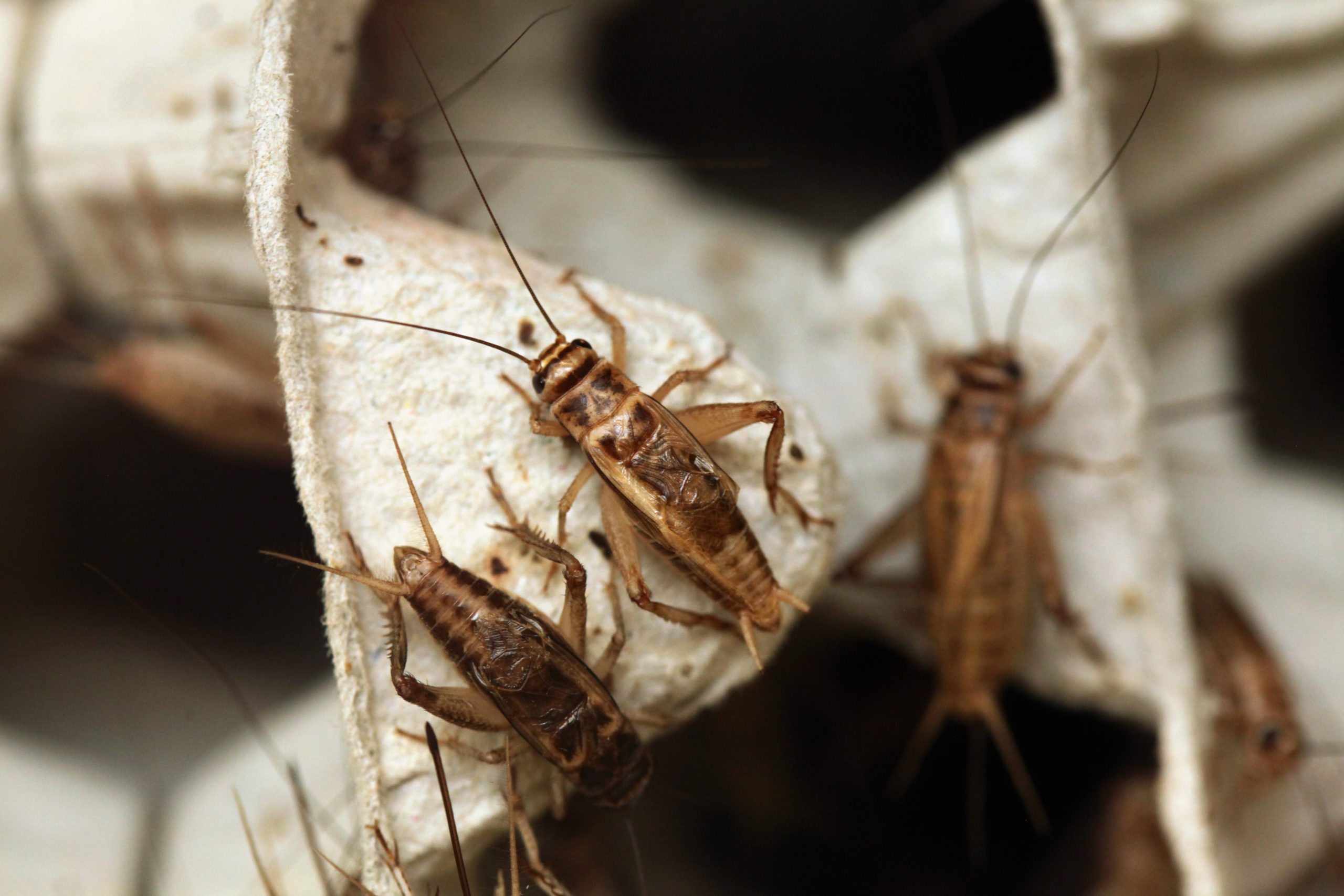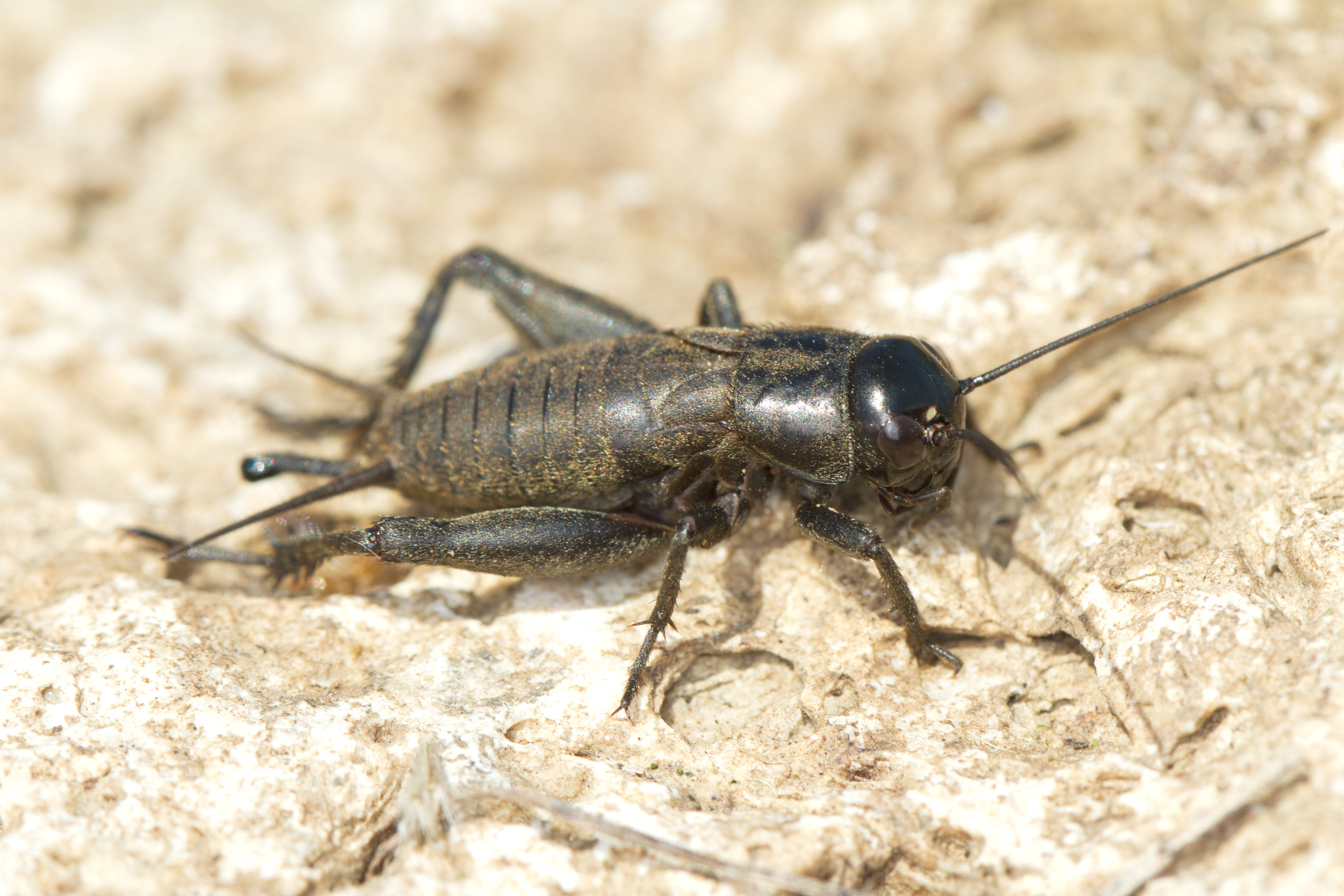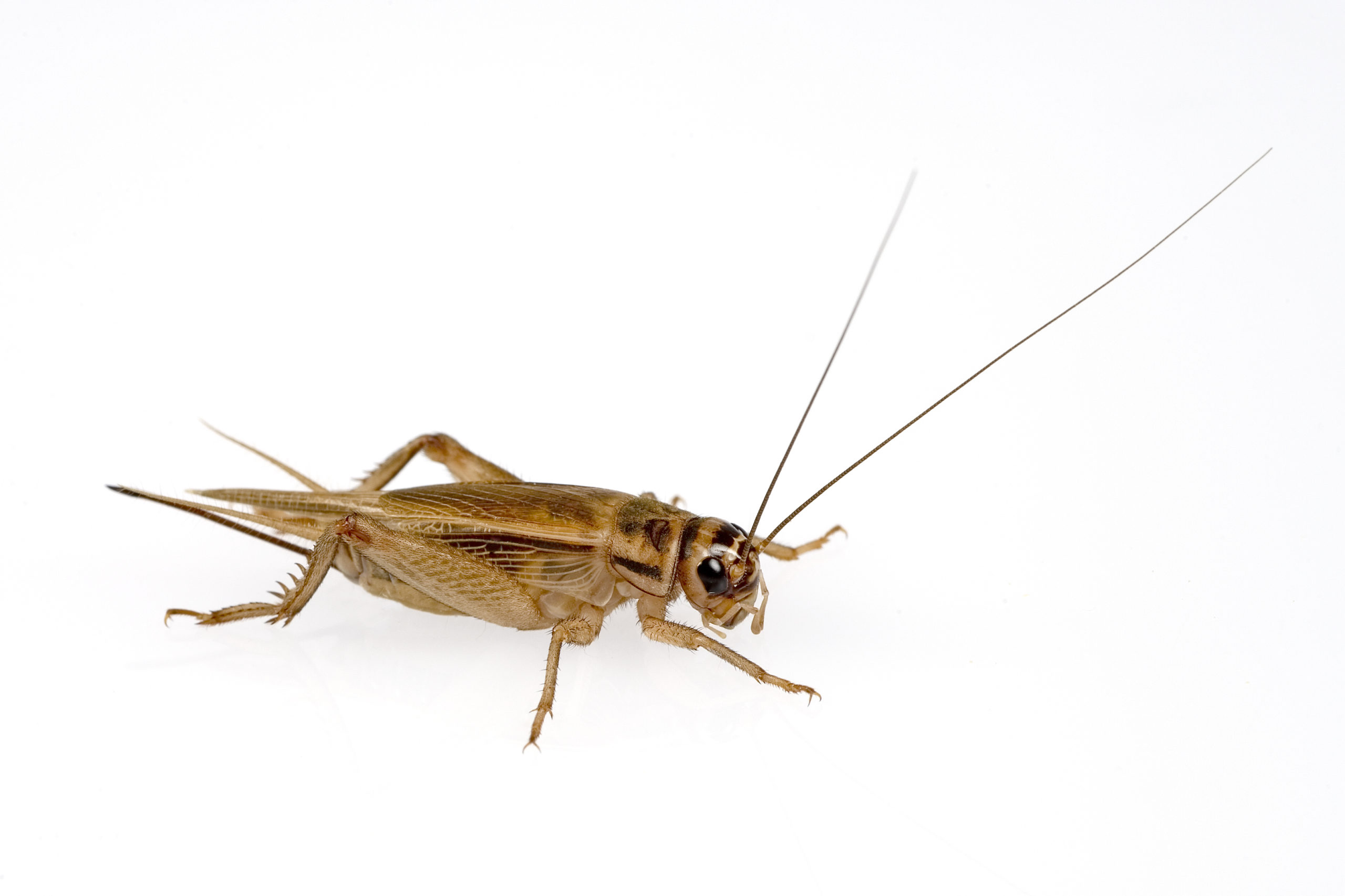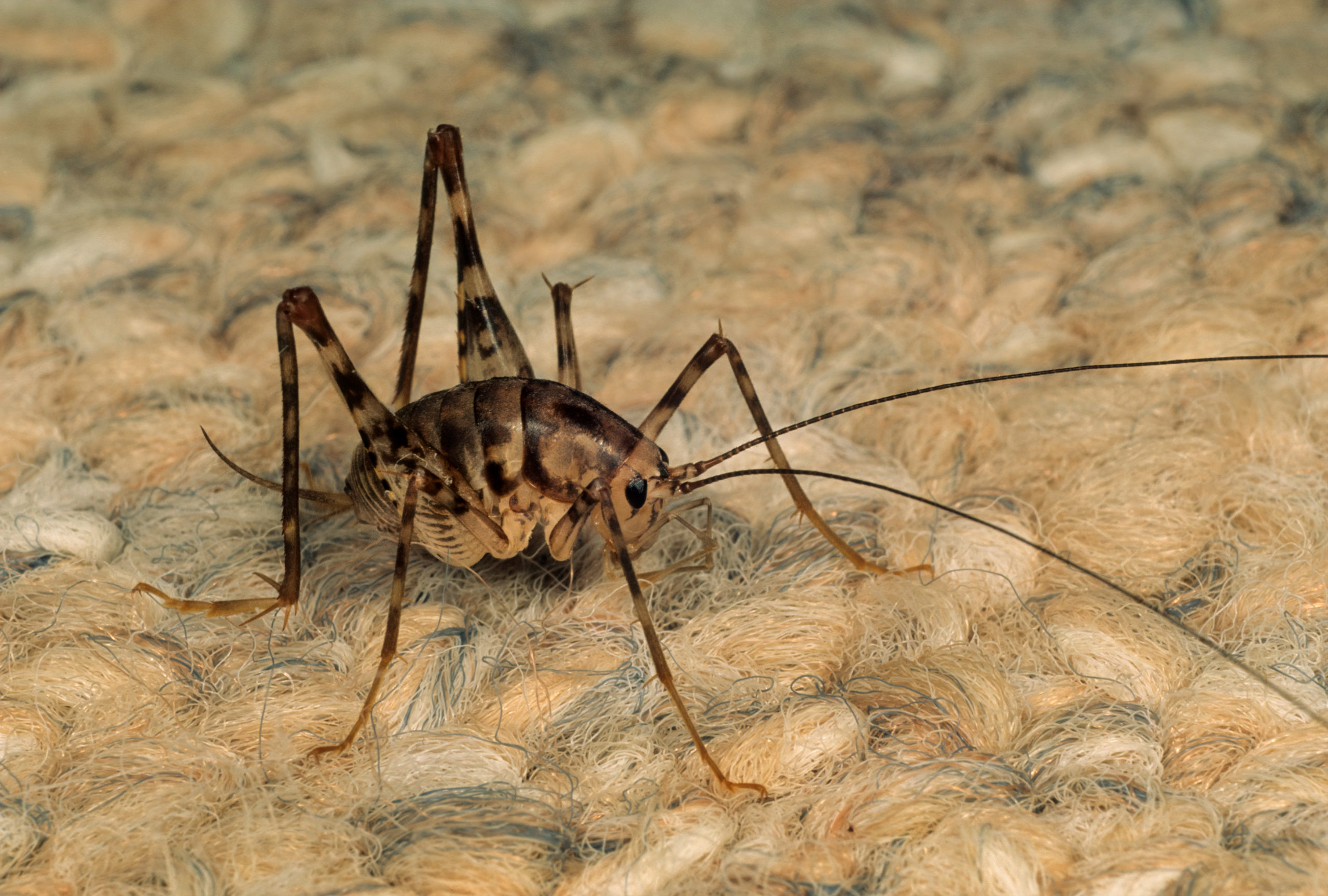3 Most Common Crickets in Virginia
3 Most Common Crickets in Virginia
Crickets
Crickets are part of the order Orthoptera, which includes grasshoppers and katydids, and consists of over 25,000 different species overall. They are one of the most common pests across the United States and are famous for the chirping noises, known as stridulation, that are made by rubbing their wings together. Unfortunately, these hopping little noisemakers can be more than a simple nuisance and are infamous for infesting areas and destroying gardens and crops.

1. Field Crickets (Gryllus spp.)
Size – There are actually a variety of different sub-species of field crickets, but on average, they range from roughly 15 to 31 mm in length.
Appearance – All field crickets are very similar in appearance and, in fact, up until 1957 in the United States, all of the subspecies were incorrectly thought to be part of just one singular species. These crickets are very dark in color ranging from black to brown, have long antennae, three pairs of legs, and wings. Although the species all have wings, some sub-species actually lack the ability to fly due to a reduction in the muscles required to fly.
Diet – Field crickets are omnivorous insects and are known for eating an extremely varied diet. They will consume fruits, vegetables, ornamental plants, seeds, live and/or dead insects, and grasses. These diets make them notorious for destroying crops, but they can be equally destructive in homes as well as field crickets have been known to even indulge in rubbers, wool, cotton, silk, leather, and nylon products.
Song – Male field crickets produce very loud, clear sounds. They are able to generate a three-note song, while females can only produce two-note songs. Interestingly, the rate at which field crickets chirp, is directly related to the current temperature of the area.

2. House Crickets (Acheta domesticus)
Size – On average, these crickets measure in at 16 to 21 mm long.
Appearance – These crickets actually somewhat resemble German cockroaches with their yellowish-brown bodies, two dark bands down their backs, spiked legs, and wings. While all house crickets have wings at some point in adulthood, they sometimes shed their wings, losing their ability to fly.
Diet – Outdoors, house crickets feed on plants and other insects, but indoors, they wreak havoc on a variety of fabrics including wool, silk, and cotton. Interestingly, they are actually on the menu for more species than they themselves consume and they are often sold in both bait shops and pets stores for fishing or feeding reptiles/amphibians.
Song – House cricket chirps vary between two to three pulses, each of which correspond to wing closures.

3. Camel Crickets (Cesthophilus spp.)
Size – These crickets are very large, measuring up to 1.25 inches in body length, and extending out several inches further with their long legs and antennae.
Appearance – These crickets received their name due to the humpback shape, but are also often referred to by the name spider cricket or “sprickets” due to their long, spider-like legs. These legs are striped with particularly large, powerful back legs for jumping great heights. While they can jump very high, they do lack wings and are unable to fly. Camel crickets are also light to dark brown in color and have a pair of super long antennae.
Diet – Camel crickets prefer to dwell in darker moist areas and will consume a variety of plants and insects within these areas.
Song – Unlike most species of crickets, camel crickets do not actually chirp, although, they are still major nuisances in homes.

Citations
Camel Cricket (no date) Horticulture and Home Pest News. Iowa State University. Available at: https://hortnews.extension.iastate.edu/camel-cricket (Accessed: June 15, 2021).
Camel Crickets 101: Information About An Occasional Invader (2021) PestWorld – Your Partner in Pest Prevention. The National Pest Management Association. Available at: https://www.pestworld.org/news-hub/pest-articles/camel-crickets-101/ (Accessed: June 15, 2021).
Field Cricket – Gryllus pennsylvanicus (2013) The Virtual Nature Trail at Penn State New Kensington. The Pennsylvania State University. Available at: https://www.dept.psu.edu/nkbiology/naturetrail/speciespages/cricket.htm (Accessed: June 15, 2021).
Grasshoppers and Crickets (Order: Orthoptera) (no date) The Amateur Entomologists’ Society. Available at: https://www.amentsoc.org/insects/fact-files/orders/orthoptera.html (Accessed: June 15, 2021).
Roche, J. (2015) The Origin of Grasshoppers, Katydids, and Crickets: A New Study Resolves the Evolutionary Tree of the Orthoptera, Entomology Today. The Entomological Society of America. Available at: https://entomologytoday.org/2015/04/08/the-origin-of-grasshoppers-katydids-and-crickets-a-new-study-resolves-the-evolutionary-tree-of-the-orthoptera/ (Accessed: June 15, 2021).
Waldvogel, M. and Alder, P. (2018) Camel Crickets, NC State Extension Publications. NC State University. Available at: https://content.ces.ncsu.edu/camel-crickets (Accessed: June 15, 2021).
Walker, T. (2014) House Cricket – Acheta domesticus (Linnaeus), The University of Florida Department of Entomology and Nematology. The Florida Department of Agriculture and Consumer Services. Available at: https://entnemdept.ufl.edu/creatures/misc/crickets/adomest.html (Accessed: June 15, 2021).
Walker, T. (2021) field crickets – Gryllus spp., The University of Florida Department of Entomology and Nematology. The Florida Department of Agriculture and Consumer Services. Available at: https://entnemdept.ufl.edu/Creatures/misc/crickets/gryllus.html (Accessed: June 15, 2021).
Keep Pests Out of Your Holiday Gatherings
Keep Pests Out of Your Holiday Gatherings Keep Pests Out of Your Holiday Gatherings Summary: The holiday season is all about good food [...]
Cold Weather vs. Warm Weather Infestations: How Temperature Shapes Pest Activity
Cold Weather vs. Warm Weather Infestations: How Temperature Shapes Pest Activity Cold Weather vs. Warm Weather Infestations: How Temperature Shapes Pest Activity Summary: [...]
Garden Pests Do Not Hibernate Indoors – How They Attack Houseplants And What To Do
Garden Pests Do Not Hibernate Indoors – How They Attack Houseplants And What To Do Garden Pests Do Not Hibernate Indoors – How They Attack [...]
The Scariest Pests (And Why They Freak Us Out)
The Scariest Pests (And Why They Freak Us Out) The Scariest Pests (And Why They Freak Us Out) Summary: A practical, homeowner-friendly guide [...]
Favorite Foods of Rats and Mice
Favorite Foods of Rats and Mice Favorite Foods of Rats and Mice Summary: Rats and mice are surprisingly picky about what they eat—especially [...]
Where Do Spiders Like to Hide? A Locals’ Guide to Sneaky Spider Spots (and What to Do About Them)
Where Do Spiders Like to Hide? A Locals’ Guide to Sneaky Spider Spots (and What to Do About Them) Where Do Spiders Like to Hide? [...]

